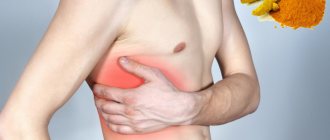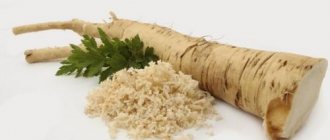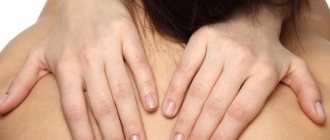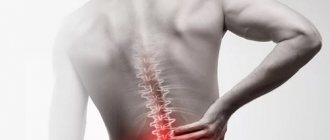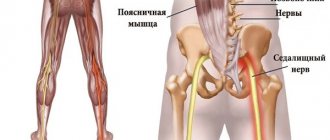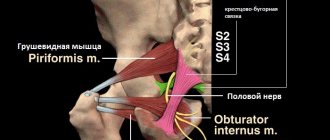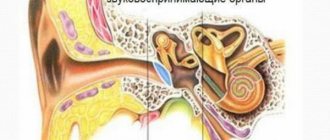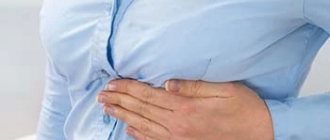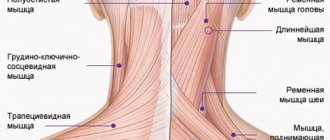Neurological diseases at the initial stage may pass without pronounced symptoms, but in an advanced stage they can cause irreparable consequences.
Severe pain in the shoulder joint may indicate a pinched brachial nerve, so you should definitely visit a doctor. If you neglect the problem or delay a visit to a neurologist, it can develop into vertebrobasilar insufficiency.
Therefore, at the first pain in the shoulder area, contact the specialists of the Kuntsevo Center. Our diagnostic base allows us to quickly conduct an MRI of the shoulder, ultrasound or electroneuromyography, based on the results of which the doctor will select the optimal treatment for the disease.
In addition, by contacting a rehabilitation center, you will save your precious time: here you can undergo diagnostic procedures, get advice from doctors, and also receive qualified recommendations for recovery.
Dozens of patients have already been able to verify the individual and effective approach of the treating staff to solving the problem of shoulder pain.
Pain by severity
A person can feel pain of varying intensity:
- Aching (also called somatic) - they appear rarely, it is difficult to establish the exact localization, and can last for days. Most often it occurs in bones and joints, causing a person a lot of inconvenience and discomfort.
- Acute - occurs unexpectedly and with high intensity, and can pass just as quickly. It is the first sign that brachial neuralgia is developing.
- Chronic – constant inflammation of tendons and joints causes the formation of chronic pain.
operation
operation
In modern medical clinics, arthroscopy is the technique of choice, since it does not lead to significant tissue trauma. This shortens the duration of the rehabilitation period and also minimizes the possibility of complications.
Pain by mechanism of occurrence
Evidence of problems with the cervical vertebrae is pain that is felt from the shoulder to the fingertips. In some patients, the arm may go numb for some time.
When you raise your arm and at the same time feel discomfort, you can talk about a problem with the supraspinal tendons.
There is another type of pain in the shoulder - when doing loads or physical exercises, the biceps hurts. This indicates a problem in the forearm.
Diagnostics
Diagnostics
Additionally, to identify the disease and differentiate it from other pathological conditions, the Neer impingement test is performed, the essence of which is to inject lidocaine into the subacromial process bursa. If compartment syndrome is present, pain after injection is reduced.
Causes
Neuralgia of the shoulder joint most often develops due to excessive physical stress on the hands and hypothermia of the joint.
There are often situations when a left-handed person lifts a heavy load with his right hand, which can cause a pinched nerve in the left hand (on the main working muscle group).
According to neurologists, the right shoulder joint is most often susceptible to pinching.
It is worth paying attention to the fact that there are factors that influence the acceleration of the development of neurological problems in a person. Among them:
- smoking and alcohol;
- improper and unbalanced diet;
- frequent colds.
Constant stressful situations are another aggravating factor, since they provoke the development of psychosomatic processes in the body.
Kinds
Kinds
With the development of a pathological process against the background of an initial change in the anatomical relationship of the shoulder structures, a primary disease occurs. If compression of the rotator muscle occurs due to a previous injury or pathological process, then secondary subacromial syndrome is diagnosed.
Which doctor treats
If painful sensations appear in the joint, we recommend immediately contacting a neurologist or rheumatologist. A traumatologist and orthopedist can also consider such patient requests.
Specialists will carry out diagnostic procedures, including:
- MRI,
- radiography,
- CT.
Additionally, patients may be prescribed an ECG and a blood test so that the doctor has a complete picture of the person’s health status and can consult with doctors of other specializations.
IMPORTANT! Shoulder pain can indicate both neurological problems and injuries to the shoulder joint. In any case, the symptom cannot be ignored, because the consequences of neglect can lead to the development of a serious illness.
Therefore, if you have shoulder pain, make an appointment with our specialist - a neurologist, traumatologist or rheumatologist, who will determine the essence of the problem and prescribe the necessary treatment for you. A consultation with a highly qualified doctor at the Kuntsevo Medical and Rehabilitation Center will help you get rid of shoulder pain and return to your previous high quality of life!
Sign up
Brachial plexus injuries
The article was prepared by surgeon Andrey Vladimirovich Baitinger
The brachial plexus is a collection of nerve fibers that arise from the spinal cord. These nerve fibers are responsible for the sensitivity of the skin of the upper limb and muscle function. When the nerve plexus is damaged, sensitivity is lost and the limb is paralyzed. Causes of Injuries The most common cause of injury to the brachial plexus is a motorcycle injury. Motorcycle injury is a type of high-energy injury. In addition, the cause of nerve damage can be car accidents, open wounds, tumors, etc. Types of injuries Injuries to the brachial plexus can be closed or open. When closed, there is no wound on the body, but as a result of injury, the nerves can be stretched (traction injury) or torn from the spinal cord (avulsion). These injuries most often occur among motorcyclists. Paralysis of the arm occurs instantly. With an open injury, there is a wound and possible damage to muscles, bones and other structures. Types of Injuries The brachial plexus arises from the spinal cord through the interlacing of the C5-T1 roots. The most common damage may be as follows:
- injury to the C5-C6 nerves - in this case, paralysis of the shoulder muscles occurs, flexion of the elbow joint is impaired. The brush remains functional. This type of paralysis is called Erb's palsy.
- injury to the C8-T1 nerves - in this case, complete paralysis of the hand muscles occurs, but the shoulder and elbow joints work. This type of paralysis is called Klumpke's palsy.
- injury to the C5-T1 nerves—total paralysis. In this case, paralysis of the entire limb occurs, the shoulder, elbow and hand stop working
Diagnosis If nerve injury is suspected, the patient should be examined by a specialist in nerve surgery as soon as possible. The most important thing is not to wait! There is no time to waste, because with each missed day and month the chances of restoring function become less and less. Already during the examination, a specialist may suspect the type of damage and prescribe the necessary examinations. ENMG, MRI, etc. are used as additional examinations.
- ENMG - electroneuromyography - study of the conduction of an electrical impulse along a nerve. Allows assessment of nerve function.
- MRI - magnetic resonance imaging - the study allows you to visually assess the anatomical state of the nerves. Using MRI, you can find the location of the nerve rupture, determine the separation of the roots from the spinal cord, and determine the condition of the surrounding soft tissues.
Treatment The treatment strategy consists of several points and depends on the type and type of injury, as well as the statute of limitations. It must be borne in mind that the earlier the patient applies, the higher the chance of recovery. If the nerves are not restored within 1 year after the injury, the muscles will atrophy and die. Therefore, it is necessary to carry out the full range of examinations as early as possible. Neurosurgical correction
If the muscles are not in a state of death and no more than 6 months (maximum 1 year) have passed since the injury, there is a chance to undergo surgery to restore damaged nerves. When nerves are separated from the spinal cord, nerves are moved, nerves are transplanted, etc. Such operations allow restoration of muscle control and a wide range of limb functions. Orthopedic correction
If more than a year has passed since the injury and the muscles have died, then nerve surgery becomes pointless. In such cases, a transplant of working non-paralyzed muscles and tendons is performed. Such operations are more complex and require long-term rehabilitation and retraining of the patient. Unfortunately, such operations do not compensate for the full variety of movements and functions of the upper limb. Using muscle and tendon transfers, surgeons can restore movement to the most important muscles. Rehabilitation
After any operation, rehabilitation is required, which includes physical therapy, physical therapy and electrical stimulation.
Forecasts
In cases of damage to the nerve sheath, there is a chance of self-recovery without surgery. Unfortunately, such damage is very rare. The prognosis for recovery of function depends on the type and type of injury, as well as the duration of the injury.
MAKE AN APPOINTMENT WITH A SURGEON
Treatment methods
To treat shoulder neuralgia, patients are prescribed anti-inflammatory and warming ointments (for example, Finalgon). To enhance the positive effects of ointments, it is imperative to take strengthening B vitamins.
It will not be superfluous to carry out general physical therapy. For these purposes, a person can be prescribed electrophoresis and ultrasound, which help relieve tissue swelling.
Exercise therapy, weights, and acupuncture are other proven options for treating shoulder impingement. In extremely severe cases, the patient may be offered a fixing bandage, which completely eliminates the mobility of the arm.
Please note that the treatment gives a positive result only in initial and moderate severity. Chronic problems with the shoulder joint cannot be treated and the patient can only eliminate and minimize pain syndromes.
Impingement syndrome of the shoulder joint - treatment without surgery
Conservative therapy is prescribed for minor changes in the structures of the shoulder and mild compression of the subacromial muscle. It includes several activities, which include:
- Providing functional rest for the joint.
- The use of non-steroidal anti-inflammatory drugs to reduce the severity of inflammation in tissues.
- Direct injection of glucocorticosteroids (hormonal drugs with a pronounced anti-inflammatory effect) into the area of the acromion process, which is prescribed in a short course no more than once a week.
- Physiotherapeutic procedures, which include magnetic therapy, ozokerite, mud baths, electrophoresis with anti-inflammatory drugs.
- Therapeutic exercise (PT), which is carried out to gradually restore the functional state of the shoulder joint, as well as reduce the degree of compression of the subacromial muscle.
Conservative treatment can be prescribed as monotherapy or to prepare the patient for surgery.
Rehabilitation and recovery
As part of high-quality rehabilitation measures, physical therapy is carried out. It allows you to restore damaged muscle tissue, reduce pain or completely get rid of it when the shoulder joint is pinched.
Patients should engage in therapeutic exercises only under the supervision of a physician in order to achieve the desired result.
It is worth noting that recovery will be positive only with the right combination of exercise therapy, medications and following all the recommendations of the attending physician!
Development mechanism
Mechanism of development
The shoulder joint is one of the most complex structures of the human musculoskeletal system. The glenoid cavity is formed by the clavicle and the acromion process of the scapula, and contains the head of the humerus.
The spherical shape of the joint provides a significant range of movements of the upper limb in various planes, including rotation (shoulder rotation). Increasing the depth of the glenoid cavity and increasing the stability of the shoulder joint is provided by a lip made of connective tissue localized around the cavity, as well as a cuff formed from the glenohumeral ligaments and muscles that provide rotation of the shoulder (rotators).
Under the acromial process of the scapula there is a muscle located, which is one of the most vulnerable structures of the shoulder. The result of its damage is rotator cuff syndrome or impingement syndrome.
Lifestyle
Patients with shoulder neuralgia must necessarily lead an active lifestyle, which allows them to activate metabolic processes in the body. Eat only natural and healthy foods.
Try to give up bad habits and spend more time outdoors. Stressful situations should be kept to a minimum! This will generally strengthen your immune system and get rid of shoulder pain.
You can make an appointment with a neurologist for a fee in one of the following ways:
- calling the clinic,
- order a call back,
- leave a request for an appointment using a convenient form on the website
Impingement syndrome of the shoulder joint - surgery
Surgical intervention is prescribed by a doctor if there is severe compression of the subacromial muscle or if there is no desired effect after 4 months of conservative therapy. The main purpose of the operation is to release the pinched muscle (subacromial decompression), for which plastic surgery (acromioplasty) of the tissues and structures of the shoulder joint is performed.
This type of surgical intervention is performed using 2 main techniques:
Periarthritis of the shoulder
Periarthritis of the shoulder
Main approaches to treatment:
- anesthesia;
- complete functional rest;
- if necessary, immobilizing or limiting mobility bandages;
- physiotherapy;
- massage.
Functional rest alone leads to healing over time. Why, then, do you need a massage? It performs a number of important functions:
- reduces pain;
- eliminates swelling, improves microcirculation, and therefore accelerates the recovery of damaged tendons and muscles;
- prevents muscles from atrophying during the period of their functional rest.
Perform a massage of the scapula and shoulder. The procedure begins with stroking. Then the area of influence is rubbed, kneaded, vibration and effleurage are applied. The specialist massages the areas where the tendons attach to the bone tissue. It affects the joint capsule on both sides.
